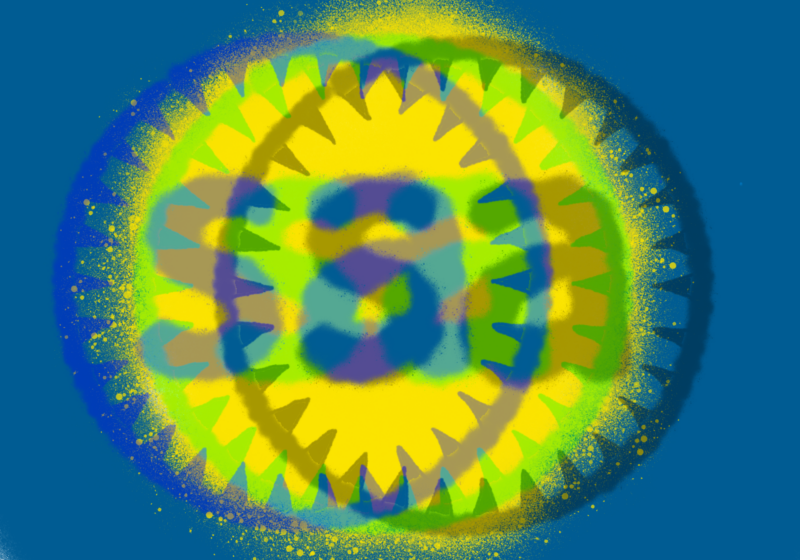Not many people would guess that a parasitic bacterium could help medicine’s fight against Zika.
But these are the topics of interest to junior Sammy Cheng, who conducts research in the Werren Lab.
He started during his sophomore summer, aided by funding from the Discover Grant. But it wasn’t smooth sailing at first.
Cheng said he didn’t have the necessary background to understand much of the biology in depth, and he did not have any knowledge of the two organisms that the lab was studying: Nasonia wasps and Wolbachia bacteria.
“I had to bootstrap a lot of the learning as I was running experiments,” Cheng said.
But the challenges didn’t dampen his enthusiasm, which began when he was young. His first exposure to biology research was at a summer research enrichment program during high school, but he always knew he was passionate about science and research. “There’s this whole entire world that you don’t learn about in your textbook, and I wanted to expand upon that,” Cheng said.
The Werren Lab investigates the evolutionary genetics of Nasonia and Wolbachia. Cheng’s current research focus is the lateral gene transfer mechanisms of Wolbachia. Lateral gene transfer is when organisms can transfer DNA from one individual to another without being a direct descendant. That would be like if a stranger you bumped into on the street gave you a part of their DNA that you could incorporate into your own genes.
The fascinating thing about Wolbachia, which are often parasites to insects, is that they can employ lateral gene transfers to other species as well, including multicellular organisms like arthropods. The bacteria is abundant and may parasitize anywhere from 25 to 70 percent of insect species.
Cheng is trying to uncover the specifics on how lateral gene transfer happens in Wolbachia and identify what genes are being transferred and/or incorporated into the host genome and passed onto the host’s future offspring.
“What makes this interesting is that we think that the Wolbachia is actually able to prevent the mosquito from passing on different diseases [to humans],” Cheng added. “This is really important when it comes to [disease] transmission to humans.”
But Cheng wasn’t looking at Wolbachia when he first started at the Werren lab; then, he was working under a new post-doctoral student, Zhichao “Mike” Yan. Together, Cheng and Yan spent months tackling the evolutionary link between ecto-parasitoids and endo-parasitoids in Nasonia.
Parasitoids, organisms who associate with a host at the host’s expense, can either live in or on their host. In Dr. Werren’s Lab, Nasonia are parasitoids whose larvae feed on the host. However, when the wasp injects its eggs, the larvae that emerge can either be on the outside of the host (ecto-parasitoid) or inside the host (endo-parasitoid).
Yan proved a valuable mentor to Cheng during these months. “He taught me so much,” Cheng said. “From basic biology to advanced biochemistry, there was a wide range of science I had learned from Mike.”
The experiences that Cheng shared with Yan also shaped his understanding of what it means to do research. One memory that stands out is when the pair collected saliva samples from Nasonia larvae from early in the morning until late at night.
Cheng’s undergraduate career in research has broadened his perspective and taught him some important skills, like how to run a polymerase chain reaction, used for amplifying DNA samples, and extract DNA.
But there’s still much to learn. “I can honestly say that I don’t know even a speck of the knowledge that is out there,” he said. “It can be frustrating to feel like you don’t know enough information.”
Cheng is planning on applying to M.D.-Ph.D. programs next year. He aims to become a translational scientist, whose experimental work can directly impact medical treatments.
One area that he hopes to investigate is how lateral gene transfer can help prevent antibiotic resistance.
Cheng said many of our current antibiotics are succumbing to resistant bacteria, and the rate of resistance seems to be much greater than the rate of antibiotic development. Often, bacteria are able to quickly pass on antibiotic resistance to each other through lateral gene transfer.
“The mechanism for lateral gene transfer in bacteria has seemingly been well understood, but in my opinion, there still is a lot of room for new research on how to prevent these genes from being transferred [from bacterium to bacterium],” Cheng said.
Cheng continues to tackle the questions of our biological world. At the end of the day, he has a philosophy that he lives by: “If we knew everything, we would not be doing research.”




